

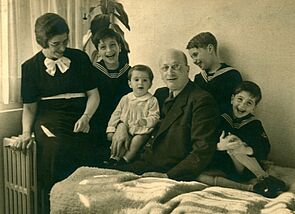
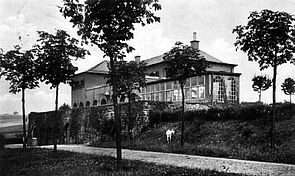
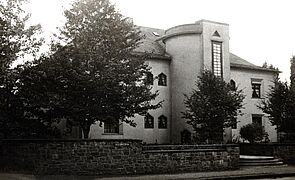
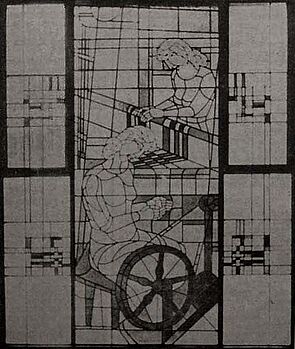
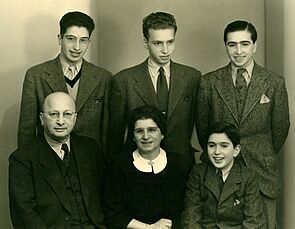
The Joseph Heymann family is closely associated with the Fritz Schaefler estate. The collector and patron Joseph Heymann (1887-1954) supported Fritz Schaefler (1888-1954) and his family throughout his life and collected his works. The 80 works were once located in Cologne and later in London, from where they found their way back to VAN HAM Art Estate 2023 in Cologne. Joseph Heymann was born in Cologne in 1887, the son of Abraham and Betty Heymann (née Nahm). Originally based in Wesseling, between Cologne and Bonn, the family is entrepreneurially active in the company A. Heymann & Co. which specialises in textile recycling. A family grave can still be found today in the Jewish cemetery in Wesseling. After completing a commercial apprenticeship in London, Joseph Heymann acquired a textile factory in Wipperfürth in 1917, which had previously been responsible for the production of woollen blankets and eventually expanded.
Joseph Heymann was particularly interested in contemporary art and was active in the Rhenish art scene, where he cultivated a friendship with the architect Wilhelm Riphahn (1889-1963), among others. In 1921, Riphahn designed the large villa in Wipperfürth, which was established on the Silberberg above the factory. The villa's colour scheme was created by the artist Fritz Schaefler, who met Heymann in the early 1920s.
Fritz Schaefler from Eschau was living on Lake Chiemsee at the time, but the prospect of new commissions and encouragement from architect Hans Hansen persuaded him to move to Cologne with his wife Vera and son Hansotto in 1927. A year earlier, Heymann had married Louise Tietz and moved from Wipperfürth back to Cologne. Joseph Heymann again commissioned Riphahn to design a house for his parents in Cologne-Lindenthal.
Heymann's interest in Expressionism led to the regular acquisition of Fritz Schaefler's works and he also authorizes him to paint portraits, including those of his parents Abraham and Betty. He designs glass windows for the canteen of the company in Wipperfürth. In Cologne, Schaefler becomes part of the art scene and, in addition to Heymann's commissions, receives work from the West German Centre for Religious Art for designs for church windows and the colour design of hospitals.
When the National Socialists seized power, his previous life was drastically changed. As a Jewish industrialist, Joseph Heymann, now the father of four sons, fled to Bradford in England via Brussels in 1937 before he and his family settled in London. He is still able to sell the Wipperfürth company. Heymann takes the more than 80 paintings, watercolours, drawings and prints by Fritz Schaefler, which form an integral part of his collection, with him into exile and ensures that the works are preserved. Fritz Schaefler is banned from painting, his works are removed from museums and two paintings are shown in the "Degenerate Art" exhibition. Contact between collector and artist is no longer maintained and both die in the same year, 1954.
Decades later, communication was established in 2002 between the collector's youngest son, Bernard Heymann in London, and the artist's grandson, Christoph Schaefler in Aachen, followed by a personal meeting in 2009. The reappraisal of Fritz Schaefler's work leads to the exhibition organised by Dr Adam C. Oellers entitled "Ostracised - Expelled - Returned. Fritz Schaefler's rediscovered works and the Heymann Collection" at the Suermondt-Ludwig-Museum in Aachen, which was shown from 13 July to 3 November 2012. In 2013, the exhibition was presented at the German Embassy in London. Meanwhile, Bernard Heymann's daughter, Lindy Heymann, and her cousin, Joey Zimmermann-Heymann, are involved in looking after the estate. Finally, in 2023, both parts of the estate - from the Schaefler family in Cologne and the Heymann family from London and Berlin - will be placed in the care of the VAN HAM Art Estate, based in Cologne and Wesseling.